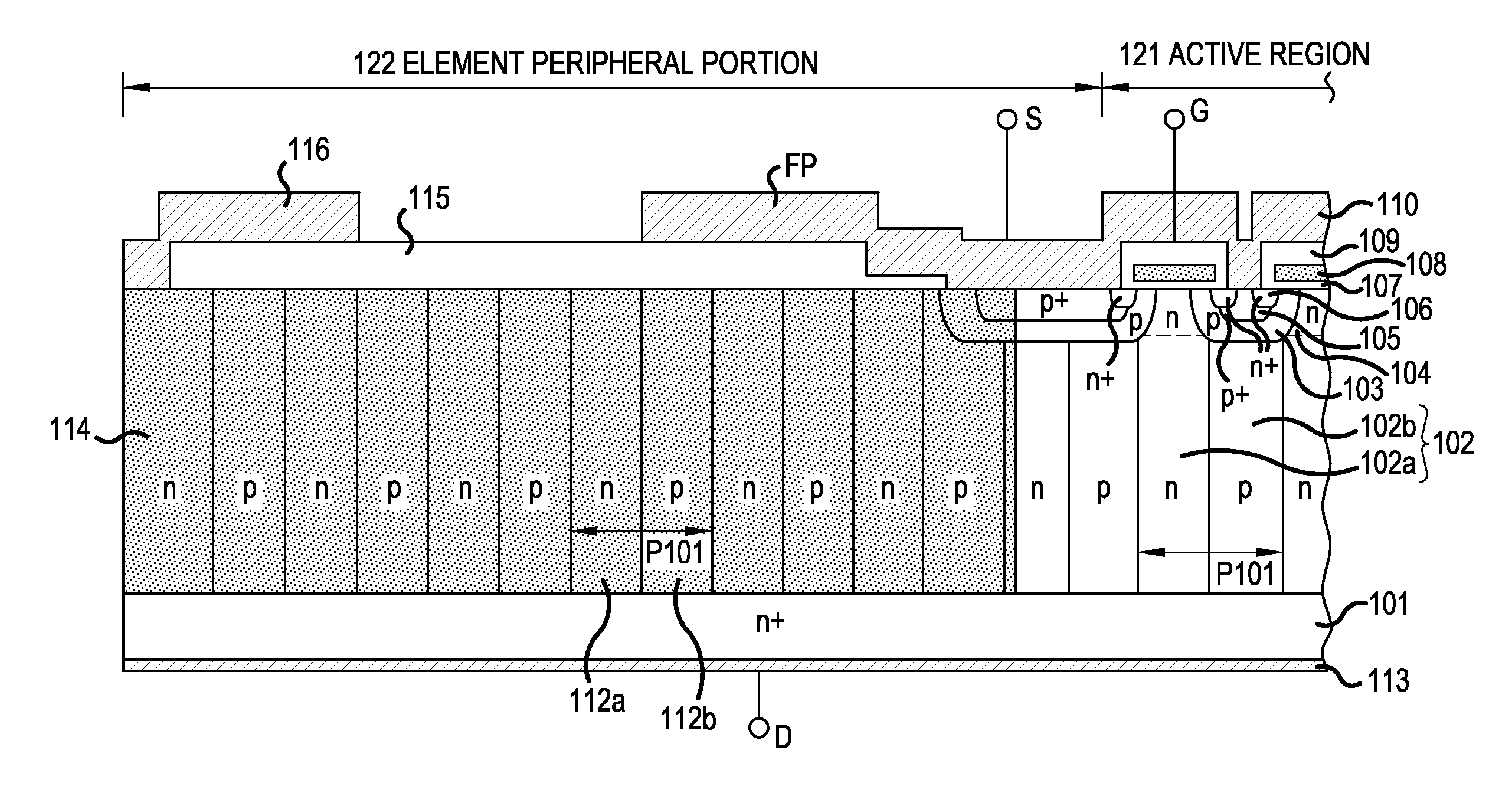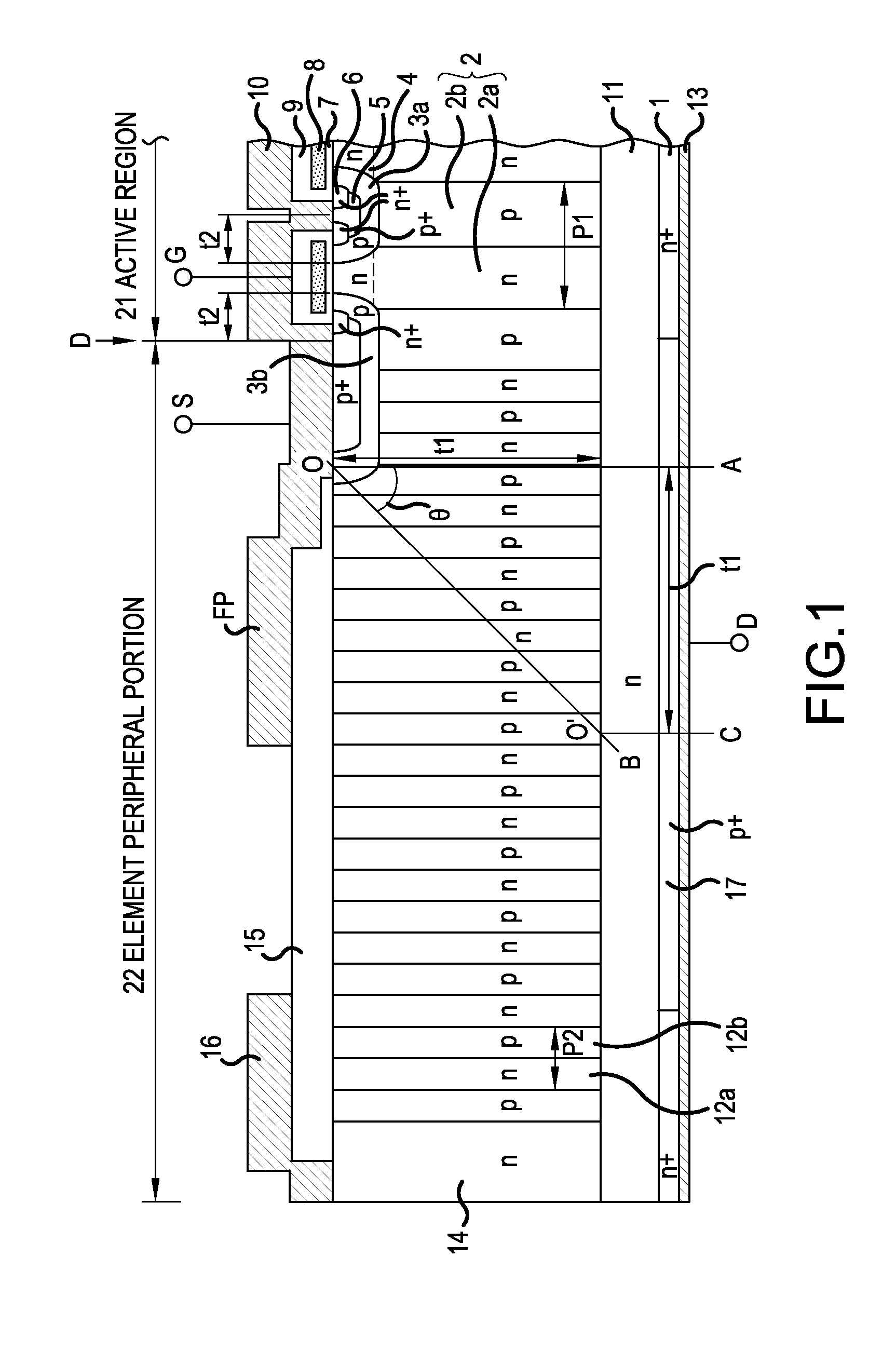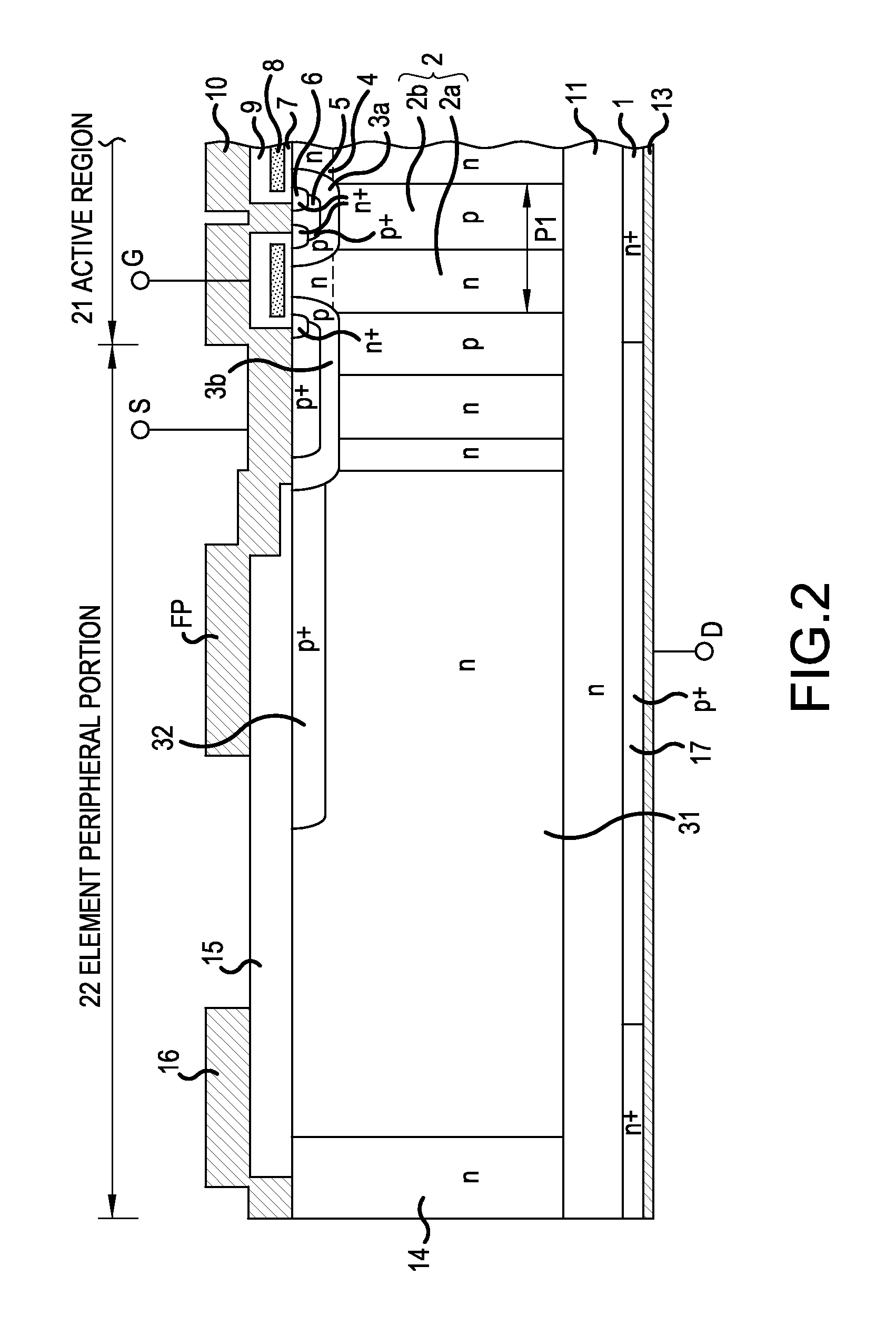Semiconductor element
a technology of semiconductor elements and components, applied in the field of semiconductor devices, can solve the problems of increasing breakdown voltage, increasing loss, and device being destroyed by thermal runaway, and achieve the effects of reducing the amount of carriers accumulated, reducing the concentration of current, and increasing the reverse recovery capability (breakdown withstand)
- Summary
- Abstract
- Description
- Claims
- Application Information
AI Technical Summary
Benefits of technology
Problems solved by technology
Method used
Image
Examples
embodiment 1
[0031]A description will be given of the structure of a semiconductor device according to Embodiment 1, using an n-channel vertical MOSFET with a planar gate structure as an example. FIG. 1 is a sectional view showing the structure of the semiconductor device according to Embodiment 1. The semiconductor device according to Embodiment 1 shown in FIG. 1 is a superjunction MOSFET including a drain drift portion (vertical drift portion) 2 of a first parallel p-n structure. A p-type base region 3a with a high impurity concentration, which forms an active region 21, is selectively provided in a surface layer on one surface side (hereafter taken to be a substrate front surface side) of the drain drift portion 2. The substrate is an epitaxial substrate, to be described hereafter.
[0032]A p+ type contact region 5 and n+ type source region 6 with high impurity concentrations are selectively provided on the substrate front surface side inside the p-type base region 3a. The n+ type source region...
embodiment 2
[0056]A description will be given of the structure of a superjunction semiconductor device according to Embodiment 2. FIG. 2 is a sectional view showing the structure of the semiconductor device according to Embodiment 2. The superjunction semiconductor device according to Embodiment 2 differs from the superjunction semiconductor device according to Embodiment 1 in that an n-type bulk region 31 contiguous with a first parallel p-n structure is provided in place of a second parallel p-n structure, and a p-type RESURF region 32 is provided in a surface layer on the substrate front surface side of the n-type bulk region 31.
[0057]The n-type bulk region 31 is a region between a first parallel p-n structure provided from the active region 21 to the edge termination region 22 and the n-type channel stopper region 14 provided farthest to the exterior in the edge termination region 22. The p-type RESURF region 32 is selectively provided in a surface layer on the substrate front surface side ...
embodiment 3
[0060]A description will be given of the structure of a superjunction semiconductor device according to Embodiment 3. FIG. 3 is a sectional view showing the structure of the semiconductor device according to Embodiment 3. The superjunction semiconductor device according to Embodiment 3 differs from the superjunction semiconductor device according to Embodiment 1 in that an outer end portion of a p+ type drain region 41 is extended as far as the outer periphery (a substrate side surface) of the edge termination region 22. Configurations other than this of the superjunction semiconductor device according to Embodiment 3 are the same as those of the superjunction semiconductor device according to Embodiment 1. The method of manufacturing the superjunction MOSFET according to Embodiment 3 is the same as the method of manufacturing the superjunction semiconductor device according to Embodiment 1, except that the formation range of the p+ type drain region 41 differs.
[0061]As heretofore d...
PUM
 Login to View More
Login to View More Abstract
Description
Claims
Application Information
 Login to View More
Login to View More - R&D
- Intellectual Property
- Life Sciences
- Materials
- Tech Scout
- Unparalleled Data Quality
- Higher Quality Content
- 60% Fewer Hallucinations
Browse by: Latest US Patents, China's latest patents, Technical Efficacy Thesaurus, Application Domain, Technology Topic, Popular Technical Reports.
© 2025 PatSnap. All rights reserved.Legal|Privacy policy|Modern Slavery Act Transparency Statement|Sitemap|About US| Contact US: help@patsnap.com



